Christmas jumpers hold a special place in UK culture, evoking nostalgia and festive cheer. These garments, often adorned with whimsical holiday-themed designs, have evolved from practical winter wear to a staple of Christmas celebrations. Let’s delve into the fascinating world of Christmas jumper production, comparing the meticulous craftsmanship of handmade traditional wool jumpers with the efficiency and variety of newer manufactured versions. By examining the making processes, materials, and unique features of each type, we aim to provide insights into what makes each option appealing and significant.
How a Christmas Jumper is Made: Traditional Wool
Historical Background
The tradition of Christmas jumpers dates back several decades, with roots in the cosy knitted sweaters worn by Scandinavian and British families during the winter season. Initially, these jumpers were practical garments designed to keep the wearer warm in harsh climates. Over time, festive motifs such as snowflakes, reindeer, and Christmas trees became popular, transforming these jumpers into holiday symbols. The resurgence of interest in handmade Christmas jumpers can be attributed to a growing appreciation for vintage fashion and a desire to preserve cultural heritage.
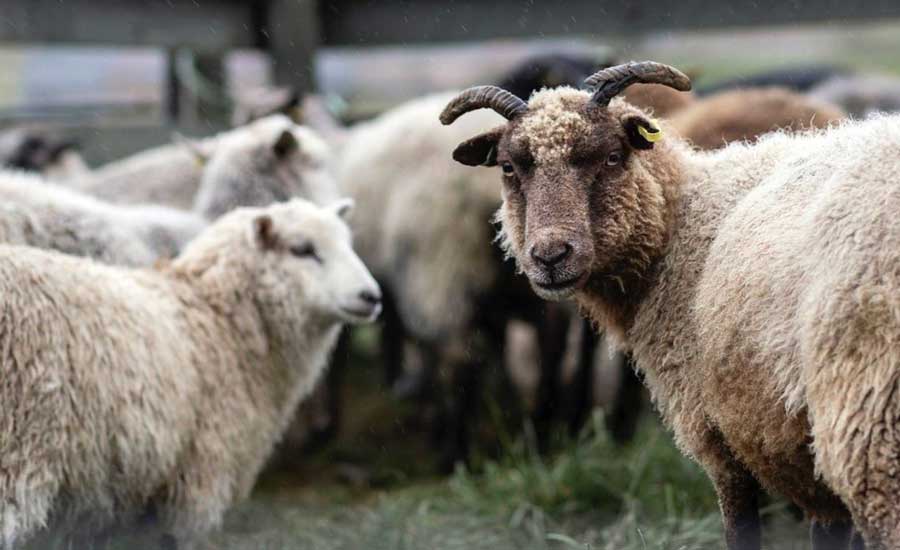
Photo credit: Shetland Wool Week
The Process, Materials and Tools Used in Knitting Sweaters
Handmade Christmas jumpers are typically crafted from high-quality wool, known for its warmth, durability, and natural insulation properties. Different types of wool, such as sheep wool and merino wool, are used based on the desired texture and softness. The tools required for knitting include various sizes of knitting needles, yarn in multiple colours, and patterns that guide the creation of intricate designs. The choice of materials and tools reflects a commitment to quality and tradition, often resulting in jumpers that are cherished for years.
Creating a handmade Christmas jumper is a labour-intensive process that requires significant skill and patience. The journey begins with selecting the right wool and preparing it for knitting. The knitter follows a pattern, often passed down through generations, to create the jumper piece by piece. Techniques such as fair isle and cable knit are commonly used to produce detailed and textured designs. The process can take anywhere from several days to weeks, depending on the complexity of the pattern and the knitter’s proficiency. Each stitch is a testament to the dedication and craftsmanship involved in producing a unique, high-quality garment.
Handmade Christmas jumpers offer a level of customisation and uniqueness that mass-produced versions cannot match. Artisans can tailor designs to individual preferences, incorporating personal touches and bespoke patterns. The durability and quality of handmade jumpers are often superior, as each piece is crafted with care and attention to detail. Additionally, the environmental impact of handmade jumpers is generally lower, as they are made from natural materials and involve sustainable production practices. This combination of tradition, quality, and sustainability makes handmade Christmas jumpers a cherished choice for many.
Handmade Wool Jumper Artisans, Events, and Places to Visit
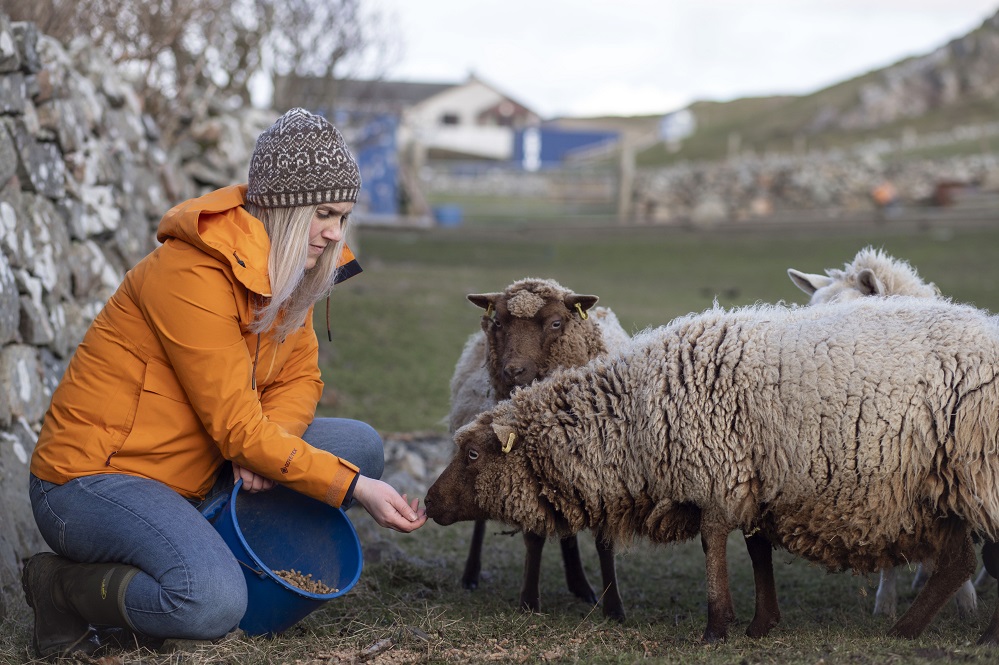
The Shetland Wool Week patron for 2024: Addie and Margaret Doull from Islesburgh Farm in Northmavine (pictured is their daughter Anne.)
Shetland Wool Week: Celebrating Heritage and Craftsmanship
Shetland Wool Week is an annual event that celebrates the unique wool industry and knitting heritage of the Shetland Islands. Held every autumn, this festival draws visitors from around the world who are passionate about wool, knitting, and textile arts. The week includes workshops, exhibitions, and tours, providing a deep dive into traditional Shetland knitting techniques and the island’s rich history. Artisans, both local and international, come together to share their knowledge and skills, making this event a cornerstone of the wool and knitting community.
The Croft House: Scottish Shetland Knitwear
The Croft House, located in Scotland, is renowned for its beautiful Fair Isle knitwear, which reflects the rich heritage of the Shetland Islands. They use natural, sustainable wool spun in British mills to create their jumpers. The designs are inspired by the colours and patterns of Scotland, ensuring each piece is a testament to traditional craftsmanship. Their story is not just about producing knitwear but preserving a piece of Scottish culture and sharing it with the world (The Croft House).
Artisans of Scotland: Celebrating Local Craftsmanship
Artisans of Scotland is a collective dedicated to promoting the skill and stories of Scottish makers. They celebrate traditional methods while integrating modern technology to reach a global audience. This platform not only supports local artisans by offering fair prices for their work but also connects customers directly with the makers, allowing for a personal and customisable shopping experience. Their mission is to highlight the beauty and quality of handmade Scottish products, ensuring that each piece is made with care and attention to detail (Artisans of Scotland).
The Isle of Sanday Knitters: A Community Tradition
On the Isle of Sanday, a small group of knitters has transformed their community into an unexpected hub for festive fashion, sparking a Christmas jumper craze with their intricate designs and high-quality woollen creations. These artisans have faced significant challenges, such as high delivery costs, but their dedication to traditional craftsmanship has garnered widespread attention, elevating their work from practical winter wear to trendy holiday essentials. The Sanday Knitters’ story highlights the importance of supporting small-scale artisans and valuing the unique stories behind handmade products.
House Of Bruar – Country Fashion And Beyond
The House of Bruar is Scotland’s premier independent country fashion retailer, bringing together an impressive collection of traditional Tweeds and cashmere garments with the very latest in rural style to create a unique shopping experience that can now also be enjoyed online. Their store, situated in picturesque rural Perthshire just off the A9, is an essential destination for anyone with an interest in country fashion. They have a wonderful collection of Shetland Knitwear and a few fun Christmas items.
Where to Purchase Handmade Jumpers
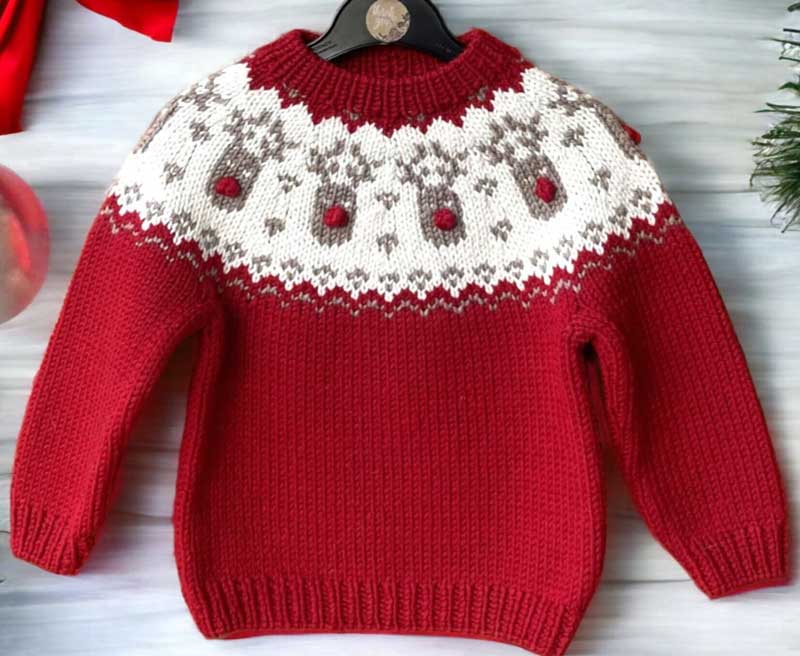
Fair Isle Reindeer Christmas sweater from KnitKnotWear on Etsy
For those interested in purchasing handmade Christmas jumpers, there are several excellent sources. Online marketplaces such as Etsy UK offer a wide range of handmade jumpers from local artisans. Speciality shops and local craft fairs are also great places to find unique pieces. Additionally, upscale knitting companies in Northern Europe, like Dale of Norway, provide high-quality handmade jumpers that reflect the rich heritage of the region.
Favourite Etsy Sellers:
- Heartsandcoronets
- Knit Knot Wear
- Natural Style Estonia
- Nordic Esthetics
- Knitting Tallinn
- Pachamama Woolies
- EdelWear
- Woolpoint Knitwear
How a Christmas Jumper is Made: The Rise of Mass Production
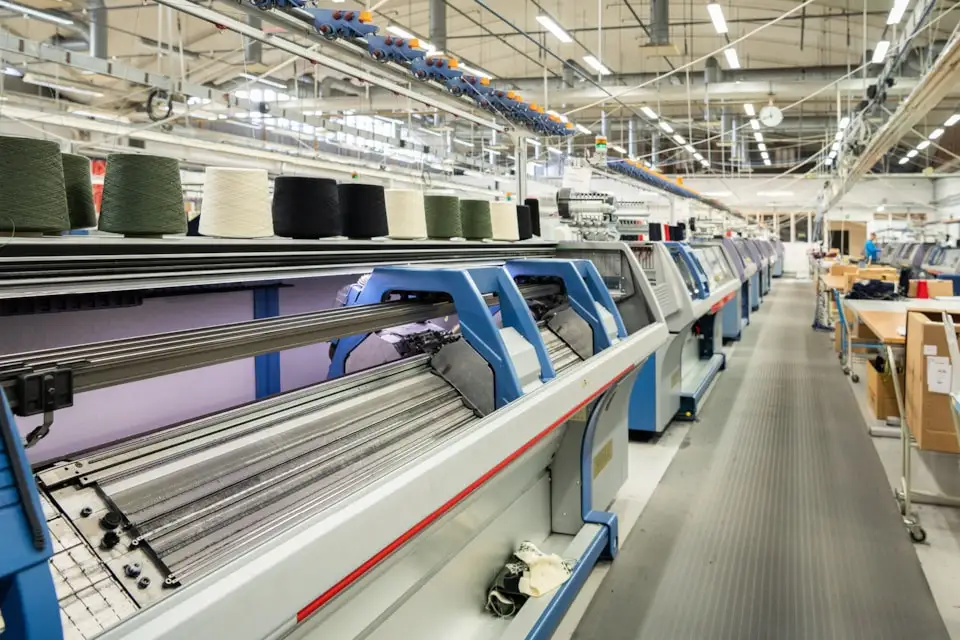 Dale of Norway Knitting Room. Read more about their commitment to quality on all fronts.
Dale of Norway Knitting Room. Read more about their commitment to quality on all fronts.
The growing demand of Christmas jumpers and knit sweaters, along with the development of efficient and high-quality manufacturing tools ushered in a significant shift in the festive fashion landscape. These manufactured versions have made Christmas jumpers accessible to a broader audience, offering a wide range of designs and price points and have contributed to the the rise of Christmas Jumper Day events, celebrity endorsements, and the general trend towards quirky and playful holiday attire.
Many companies, such as Dale of Norway, are committed to respecting their rich history and hold fast to time-honored principles including valuing employees, craftsmanship, tradition, and sustainability.
“In a world dominated by “fast fashion” and an ever-expanding consumption of goods, we have a persistent focus on making high-quality, long-lasting garments of 100% wool. We belive wool can be one of the keys to a more sustainable future.”
~Dale of Norway
For those looking to purchase manufactured Christmas jumpers, there are a variety of retailers with extensive selections. Here are a few of our favourite online sites:
Which do you prefer? Handmade and traditional or novelty and fun?
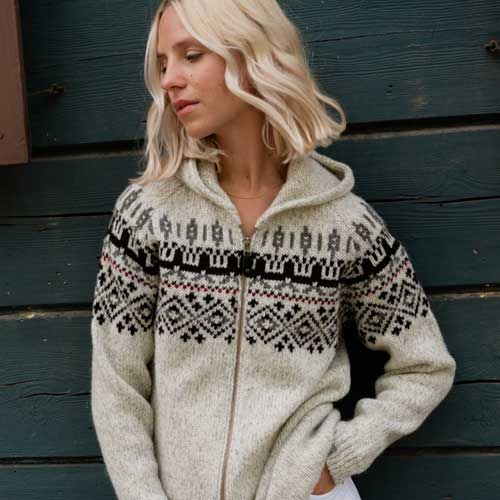
Knitted wool jumper from WoolHouse Eshop on Etsy
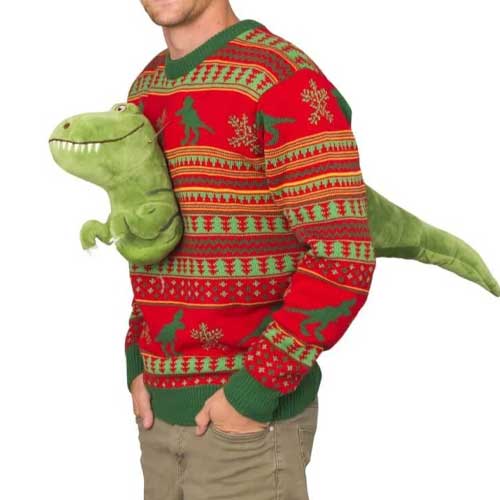
3D Dinosaur Jumper from UglyChristmasSweater.com
When it comes to how a Christmas Jumper is made, handmade traditional wool jumpers and newer manufactured versions offer distinct advantages. Handmade jumpers are crafted with meticulous attention to detail, resulting in superior quality and durability. The use of natural wool provides excellent insulation and comfort, making these jumpers a long-lasting investment. In contrast, manufactured jumpers, while often less durable due to the use of synthetic fibres, benefit from consistent production quality and the ability to replicate intricate designs on a large scale. The craftsmanship in handmade jumpers is unmatched, reflecting the skill and dedication of the artisan.
The cultural and personal value of Christmas jumpers varies between handmade and manufactured versions. Handmade jumpers often carry sentimental value, especially when crafted by a loved one or passed down through generations. They are seen as a celebration of tradition and craftsmanship, adding a personal touch to festive attire. Manufactured jumpers, while lacking the personal connection of handmade items, offer a sense of fun and inclusivity. Their diverse designs allow individuals to express their personality and join in the communal spirit of holiday celebrations. Both types of jumpers play a significant role in the cultural fabric of Christmas in the UK, each offering unique benefits and joys.
In summary, how a Christmas Jumper is made and which one you prefer depends on your individual preferences and values. Handmade jumpers stand out for their quality, craftsmanship, and sustainability, making them a treasured addition to any wardrobe. Manufactured jumpers, with their affordability, variety, and accessibility, provide an easy way for everyone to partake in the festive fun. Both types of jumpers have their place in the rich tapestry of Christmas traditions, reflecting the diverse ways in which people celebrate the holiday season.
Take the poll:
Featured image from Dale of Norway.

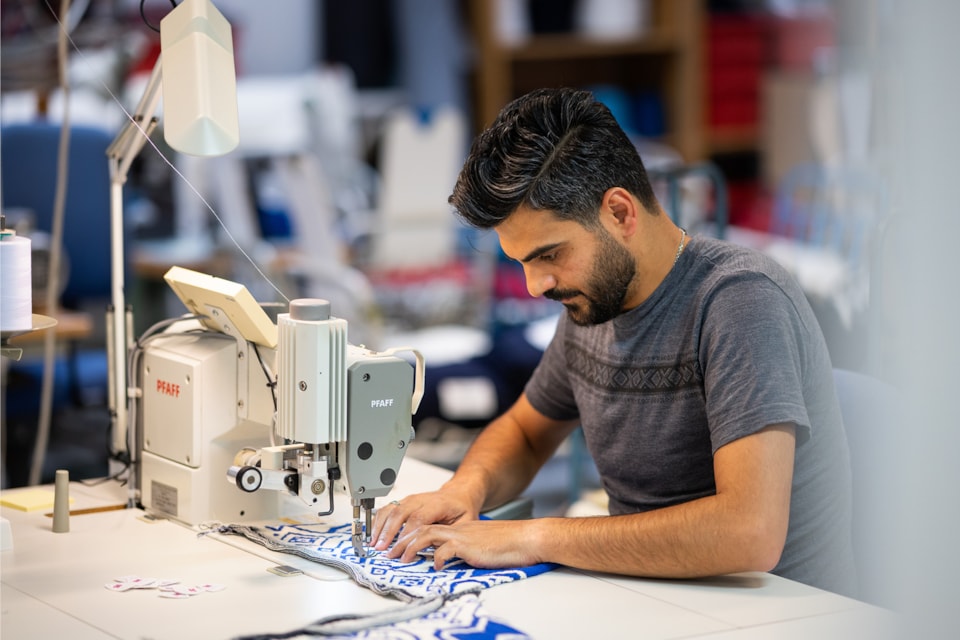
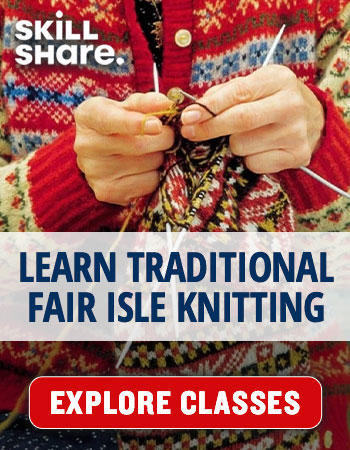

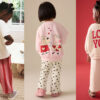




0 Comments